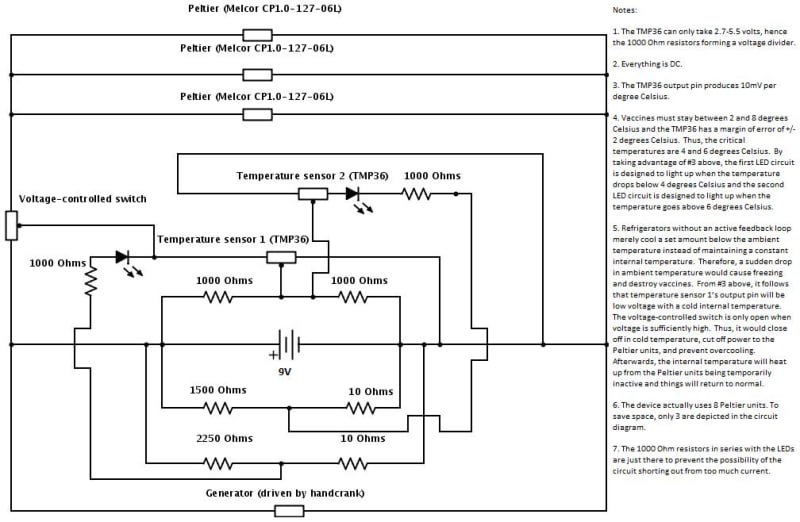Most vaccines need to be kept refrigerated between 2 and 8 degrees Celsius (PoweringHealth.org). Any temperatures outside that strict range are unacceptable. This is a problem in developing nations. Even if the regional hospital has refrigeration equipment, the vaccines still need to be distributed to individual villages. Vaccine distribution workers typically use ice boxes and are faced with two problems as a result. First, they must race against the melting of the ice. Second, accidentally packing too high an ice-to-vaccine ratio would freeze the vaccines and destroy them. These challenges make for some pretty tough odds. In fact, the World Health Organization reports that vaccine wastage rates may be as high as 50% in some cases. Both lives and money are being lost. Here's my response to this issue.
The vaccine distribution worker uses a hand crank for about 5 minutes to power the device, while walking, and can then go about 15 minutes before needing to crank it again. The crank powers a small DC generator that charges a 9V rechargeable Li-ion battery. In turn, the battery powers Peltier units which carry out thermoelectric cooling. The design has three main advantages. First, the circuitry prevents sudden drops in ambient temperature from causing freezing, which would destroy vaccines, with an active feedback loop. This is a safety feature that some developing world-oriented refrigerators lack. Secondly, there are no refrigerant fluids that could potentially leak, making this an environmentally-friendly product. Lastly, the design is inexpensive; with an estimated unit cost of $50 (a solar-based equivalent would cost several hundred dollars).
Video
Like this entry?
-
About the Entrant
- Name:Rogers Feng
- Type of entry:individual
- Patent status:none





